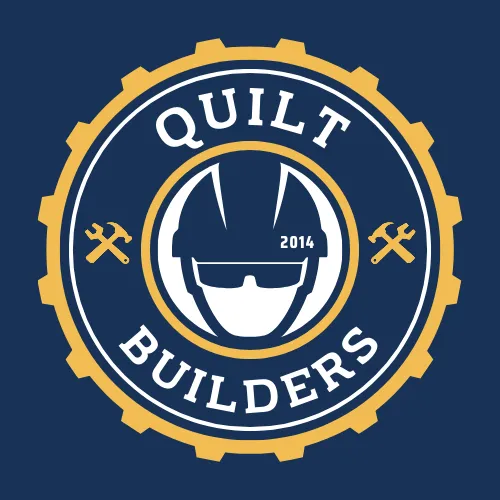
How to Choose the Right Fabric for Your Quilt
Selecting the perfect fabric is a crucial step in the quilting process, one that can ultimately determine the success of your final masterpiece. For beginning quilters, understanding the nuances of fabric choice is essential, especially when it comes to creating a baby quilt that demands both softness and durability. This comprehensive guide will delve into the various factors you must consider, including fabric type, color, pattern, and texture. We will compare the pros and cons of cotton and blends, offer expert advice on fabric preparation and cutting, and provide practical recommendations for your quilting projects. By the end of this post, you'll be equipped with the knowledge to choose the right fabric with confidence and embark on your quilting journey with ease.
Choosing the Right Fabric for Your Baby Quilt: A Beginner's Guide
When it comes to creating a cozy quilted nest or tummy time mat for your little one, choosing the right fabric for your baby quilt is much more than just picking a pretty pattern. The fabric you choose impacts the comfort, durability, and safety of the quilt for your baby's delicate skin--it must be soft & gentle to the touch. Durability is key, as baby quilts often become cherished keepsakes that endure through the years. Obviously, understanding the importance of fabric selection for baby quilts is essential for any beginner looking to craft a piece that is both beautiful and functional.
The softness of the fabric is one of the first factors to consider. Babies have delicate skin, and the material you choose should provide a gentle touch to avoid any irritation. Look for fabrics that are hypoallergenic and free from harsh chemicals and dyes, as these will be kinder to your baby's skin.
Durability is another significant consideration. Baby quilts are not just decorative items; they are used frequently and need to withstand numerous washes. Opt for high-quality fabrics that can endure the wear and tear of daily use without losing their shape or color.
When selecting suitable fabrics for baby quilts, it's important to think about the color and pattern. Soft, calming colors and patterns can be soothing for babies, while more vibrant hues and playful designs can stimulate their senses and encourage cognitive development. Remember that the colorfastness of the fabric is vital to ensure that the colors do not bleed during washing.
The texture of the fabric also plays a role in the overall comfort of the quilt. Fabrics with a smooth and soft texture are ideal for baby quilts, as they provide a cozy surface for your baby to lie on. Additionally, the texture of the fabric contributes to the tactile experience for your baby. Quilts with a variety of textures can be delightful for little hands t explore, but always prioritize smoothness and softness to keep your baby comfortable.
Some examples of suitable fabrics for baby quilts include cotton, which is breathable and easy to clean, and flannel, known for its softness and warmth. Minky fabric is also a popular choice due to its plush texture that babies often find comforting.
Creating a baby quilt is a labor of love and choosing the right fabric is at the heart of this process. By carefully considering the type, color, pattern, and texture of the fabric, you can
Cotton vs. Blends: What’s Best for Your Quilt Project?
As you begin a new quilting project, choosing the right fabric is as important as the pattern you intend to create. The ongoing debate among quilters over cotton versus blends is one that every quilter must navigate. Understanding the different fabric types, their comparison, and the pros & cons associated with each can help you make a more informed decision. Here are some recommendations to guide you through your fabric selection process.
Cotton is often the go-to choice for quilters due to its durability, ease of handling, and the vast array of colors and patterns available. It's a natural fiber that allows the quilt to breathe, making it ideal for comfort and year-round use. However, pure cotton can sometimes shrink if not pre-washed, and its colors may fade over time.
On the other hand, cotton blends, which are a combination of cotton and synthetic fibers, offer a bit of a compromise. Because of their composition, blends tend to be less prone to wrinkling and shrinking, and they often retain color better than 100% cotton. On the other hand, they also tend to be at least slightly less breathable. In addition, to those with sensitive or delicate skin, these fabrics can feel scratchy or rough, which some quilters (especially those making baby quilts) find unpleasant.
Flannel is another popular choice, especially for cozy, winter quilts. Its soft texture and warmth are unparalleled, but flannel can be a bit more challenging to work with due to its fluffiness & tendency to stretch and pill.
When it comes to recommendations, consider the end-use of your quilt. For heirloom quilts, pure cotton may be preferred for both durability & authenticity.
How to Prep and Cut Fabric Like a Pro
Believe it or not, while the preparation phase may not seem as important as the sewing itself, how you prepare your fabric before cutting & sewing can dramatically influence your final results. Preparing fabric for quilting with precision ensures a final product that not only looks professional but also stands the test of time. Let's look at how to prep and cut fabric like a pro.
First, before you even think about cutting, you really need to prepare your fabric. Begin by washing your fabric to prevent future shrinkage and to remove any manufacturing residues. Use a gentle detergent and avoid any harsh chemicals that could damage the fibers. Once clean, iron the fabric to eliminate wrinkles and folds. This step is crucial in terms of being able to accurately cut fabric because any creases can lead to imprecise cuts and mismatched seams.
Next, let’s talk about the cutting process. Accurate cutting is the bedrock of a well-constructed quilt. Invest in a quality rotary cutter, a cutting mat, and clear acrylic rulers. These tools will enhance your precision and make the cutting process more efficient. When cutting, ensure your measurements are exact, and always double-check them before slicing into your fabric. Remember, it’s better to measure twice and cut once.
Lastly, proper handling & storing of fabric is vital for maintaining its condition.
Always keep your fabric flat or rolled, avoiding folding if possible.
Store it in a cool, dry place away from direct sunlight to prevent fading and deterioration.
If you absolutely must fold your fabric, try to refold it periodically along different lines to avoid creating creases, which weaken the fabric over time, eventually tearing or breaking the fibers of your fabric.
Conclusion
Choosing the right fabric for your quilt is both an exhilarating & essential part of the quilting process. As we conclude, let's recap the fabric selection tips we've discussed. Choosing the right fabric is a pivotal step in the quilting process, one that can significantly affect the outcome of your project. It's essential to consider factors such as the fabric's weight, weave, color, and pattern, as these elements will influence both the quilt's aesthetic and functional qualities.
The interplay of color and pattern can bring your quilt to life, or leave it looking bland & boring. These considerations are not just practical but also an expression of your creative vision.
Next time you're at the fabric store you might want to experiment with different fabrics, mixing textures, weights, and weaves to see how they interact with each other. Quilting is an art form, and like any artist, you'll find your medium by exploring the vast array of options available to you. Don't be afraid to step outside of your comfort zone and try something new.
I invite you to share your fabric choices, creations, and any questions you might have in the comments below or within our quilting community. Your insights and experiences are invaluable to fellow quilters, whether they're seasoned experts or just starting their quilting journey.
For more information on choosing the right fabric for your quilt, consider reading:
Basic Quilting Techniques: A Step-by-Step Guide
The Importance of Color and Pattern in Quiltingilting

